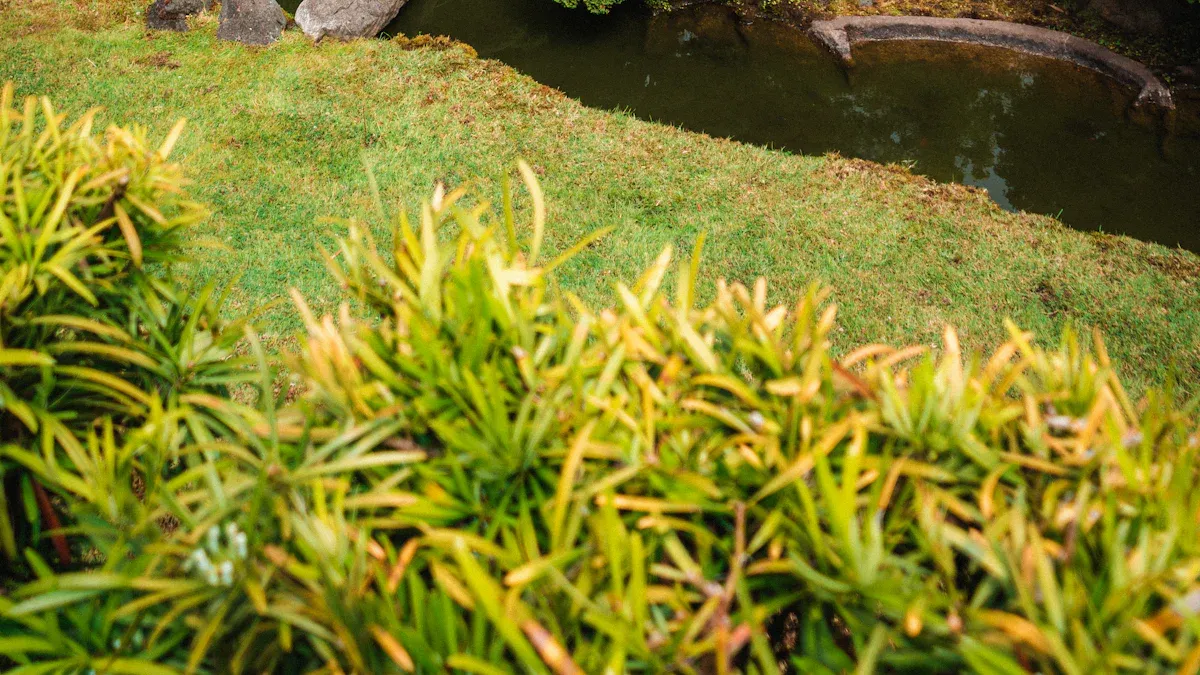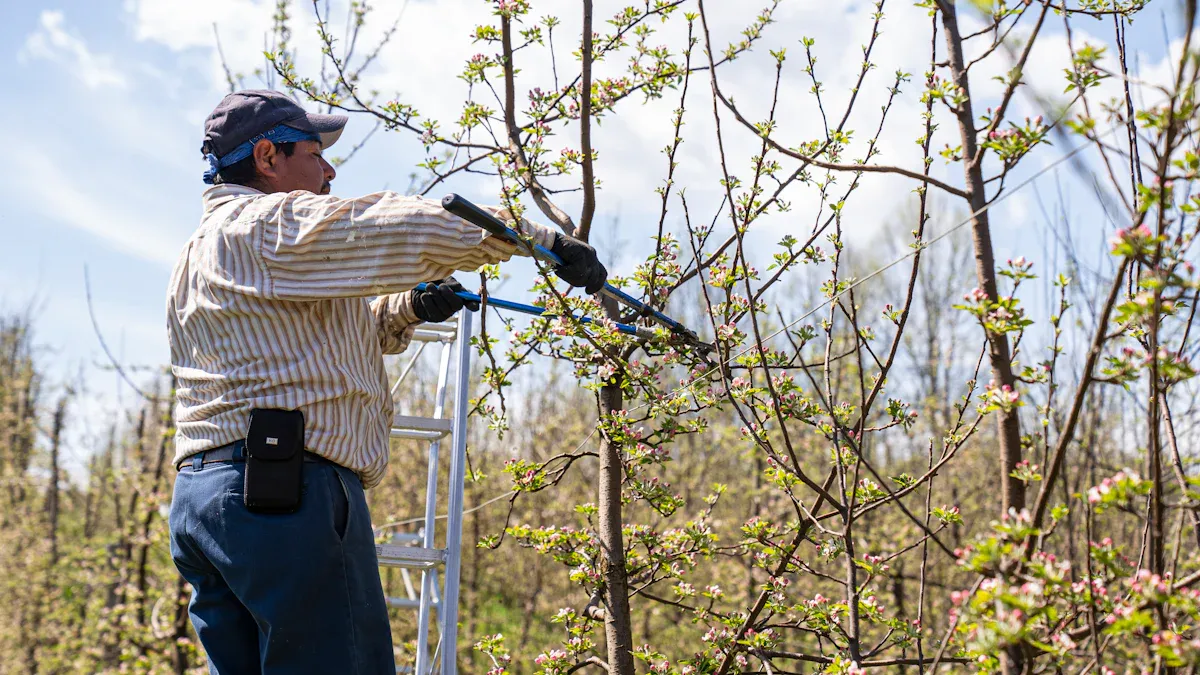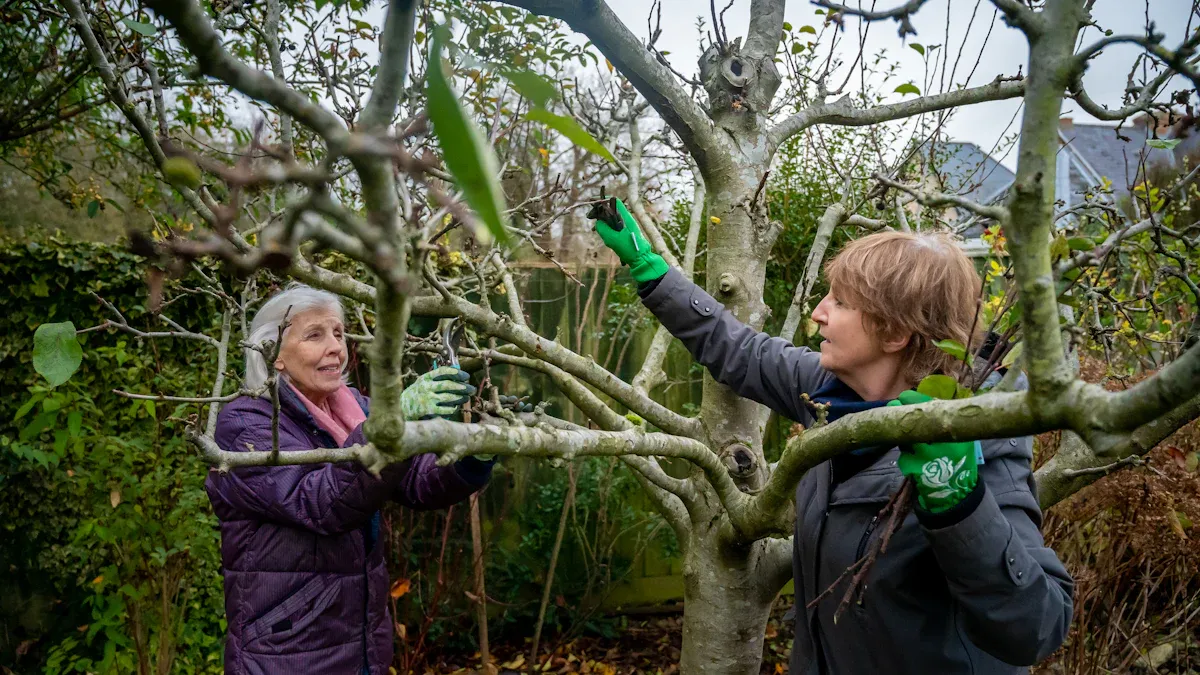
Spring is the perfect time to give your shrubs some love through pruning. This practice not only boosts their health but also encourages vibrant blooms. Knowing which shrubs you should prune can make a big difference in their growth.
When you prune correctly, you focus growth on younger stems, enhance airflow, and let in more sunlight. These factors lead to healthier plants and abundant flowers. So, let’s dive into the shrubs you should prune this spring!
Key Takeaways
Prune azaleas right after they bloom in spring to promote healthy growth and vibrant flowers.
Ninebark benefits from spring pruning; cut back a third of its branches for better air circulation and more blooms.
Avoid pruning lilacs and forsythia in spring to prevent cutting off next year’s flower buds.
Prune oakleaf hydrangeas after they bloom in late summer to encourage new growth for the next season.
Always check specific pruning needs for each shrub to ensure healthy growth and beautiful blooms.
Shrubs You Should Prune in Spring

Azaleas
Azaleas are a favorite among gardeners for their stunning blooms. Pruning them in spring is essential for maintaining their health and ensuring vibrant flowers. The best time to prune azaleas is right after they bloom, ideally in April or May. This timing helps you avoid cutting off next year’s flower buds. If you miss this window, you might not see any flowers the following year!
Thinning: Remove branches back to the main trunk or another branch. This allows light to penetrate and encourages growth on the interior branches.
Heading: Cut back branches to reduce size or renew overgrown plants. Do this before spring growth begins to allow for new growth and flower bud formation.
Care Tips for Azaleas
Water regularly, especially during dry spells.
Fertilize with a balanced fertilizer after pruning to promote healthy growth.
Mulch around the base to retain moisture and suppress weeds.
Oakleaf Hydrangeas
Oakleaf hydrangeas are known for their unique foliage and beautiful blooms. Pruning them in spring helps rejuvenate the plant and encourages new growth. You’ll be amazed at how quickly your plant will rebound with new growth after a good prune.
Prune Oakleaf Hydrangeas right after flowering in late summer, as they bloom on last year’s wood.
Care Tips for Oakleaf Hydrangeas
Ensure they are planted in humus-rich, well-drained soil.
Provide deep watering, especially during summer, as they are not drought tolerant.
Once established, they can tolerate full sun.
Ninebark
Ninebark is a resilient shrub that thrives with spring pruning. Cutting back a third of the thick branches and stems can lead to bountiful flower and leaf growth. Regular pruning improves air circulation, reducing the risk of diseases like powdery mildew.
Prune Ninebark in early spring, just after the first bloom cycle, to rejuvenate the plant and encourage new growth.
Care Tips for Ninebark
For shape, prune in late spring or early summer.
Renovate in late winter by removing large stems at ground level if size management is necessary.
Fertilize young shrubs to enhance size and flowering.
Bluebeard
Bluebeard shrubs benefit greatly from spring pruning. This practice helps prevent overgrowth and leggy growth, resulting in a fuller and healthier plant. Pruning should be done when temperatures are warm and before the plant begins active growth.
Care Tips for Bluebeard
Water young Bluebeard plants regularly in their first year. Once established, they are drought tolerant.
Use a balanced fertilizer each spring, avoiding high nitrogen fertilizers.
Ensure Bluebeard receives at least 6 hours of sunlight daily for optimal blooming from July to September.
[Shrub 5 Name]
Pruning [Shrub 5 Name] in spring significantly affects its flowering, shape, and health. Early spring pruning is essential to avoid removing flower buds. Thinning involves removing one-third of the oldest wood annually to promote new growth and better flowering.
Care Tips for [Shrub 5 Name]
Assess for any frost or freeze damage before pruning.
Wait for stable temperatures before pruning.
Remove dead or damaged wood with clean cuts above healthy buds.
Provide adequate water and nutrients to support recovery.
[Shrub 6 Name]
Spring pruning for [Shrub 6 Name] enhances its overall health and appearance. Regular pruning helps maintain its shape and encourages new growth.
Care Tips for [Shrub 6 Name]
Use organic hardwood mulch to retain moisture.
Water deeply and infrequently, ideally in the morning.
Inspect for feeding needs in spring and fall.
[Shrub 7 Name]
Pruning [Shrub 7 Name] in spring allows it to utilize stored nutrients effectively. This practice clears out dead material and shapes the plant for healthy growth.
Care Tips for [Shrub 7 Name]
Prune during the dormant season to remove dead plant material.
Ensure the plant seals wounds quickly to reduce the risk of infection.
[Shrub 8 Name]
Spring-flowering shrubs like [Shrub 8 Name] should be pruned immediately after their flowers fade. This timing preserves the blooms for the following year.
Care Tips for [Shrub 8 Name]
Prune right after flowering to avoid cutting next year’s buds.
Ensure proper sunlight and water for optimal growth.
[Shrub 9 Name]
Pruning [Shrub 9 Name] in early spring allows the plant to grow vigorously. This practice shapes the plant and removes dead material.
Care Tips for [Shrub 9 Name]
Maintain a consistent watering schedule.
Monitor for signs of pests or disease regularly.
[Shrub 10 Name]
Spring pruning for [Shrub 10 Name] improves its shape and promotes better flowering. It’s essential to prune before growth starts for the best results.
Care Tips for [Shrub 10 Name]
Remove all dead wood by cutting at least an inch below the dead area.
Prune to between 18 and 24 inches for vigorous plants.
Provide adequate light and air circulation for healthy growth.
Shrubs You Shouldn’t Prune in Spring

Lilacs
You might love lilacs for their fragrant blooms, but spring isn’t the right time to prune them. If you prune lilacs in spring, you risk cutting off the buds that will bloom later in the season.
Reasons Not to Prune Lilacs
Lilacs bloom on last year’s growth, so pruning in spring removes the buds necessary for next season’s flowers.
For maximum flowering, wait until after the lilac flowers have faded before pruning.
Prune lilacs in late spring or early summer after the flowers have faded to avoid cutting back new buds.
Forsythia
Forsythia is another shrub that you should leave alone in spring. This plant blooms on old wood, and pruning it at the wrong time can rob you of its beautiful yellow flowers.
Reasons Not to Prune Forsythia
Pruning in spring removes this year’s flowers, which can be disappointing.
It’s best to wait until after the blooms have faded to prune the plant.
Aim to prune in May or early June to avoid cutting off new buds.
Evergreen Viburnum
Evergreen viburnum is a lovely shrub that can thrive without spring pruning. If you prune it too early, you might hinder its flowering potential.
Reasons Not to Prune Evergreen Viburnum
Viburnums flower on two-year-old wood. Continuous pruning can lead to branches consisting mostly of one-year wood, resulting in less flowering.
Mock Orange
Mock orange is a delightful shrub with fragrant flowers. However, spring pruning can lead to a loss of blooms for the following year.
Reasons Not to Prune Mock Orange
You should prune Mock Orange just after flowering.
Pruning in spring can remove the buds that will bloom next year.
Wait until after the flowers have faded to prune.
Rhododendrons
Rhododendrons are stunning shrubs that require careful timing when it comes to pruning. If you prune them in spring, you might harm future blooms.
Reasons Not to Prune Rhododendrons
Pruning rhododendrons in spring can remove essential flower buds.
These buds form shortly after the plant finishes blooming and are necessary for next year’s flowers.
It’s best to prune rhododendrons just after they finish flowering to avoid bud removal.
Virginia Sweetspire
Virginia sweetspire is a beautiful shrub that thrives when left unpruned in spring. Pruning at the wrong time can affect its blooming cycle.
Reasons Not to Prune Virginia Sweetspire
Pruning should occur right after flowering to avoid removing flower buds for the following spring.
Virginia sweetspire blooms on old wood, so spring pruning risks cutting off the flower buds.
In colder climates, winter dieback can lead to the loss of flower buds if pruning occurs at the wrong time.
Elderberries
Elderberries are known for their delicious berries and beautiful flowers. However, spring pruning can disrupt their growth cycle.
Reasons Not to Prune Elderberries
Pruning elderberries in spring can remove flower buds that develop on older wood.
It’s better to prune them after they have finished blooming to ensure a good harvest of berries.
[Shrub 4 Name]
You might think about pruning [Shrub 4 Name] in spring, but it’s best to hold off. This shrub has specific needs that make spring pruning counterproductive.
Reasons Not to Prune [Shrub 4 Name]
[Insert specific reasons based on the shrub’s blooming habits and growth patterns.]
[Shrub 5 Name]
Finally, consider [Shrub 5 Name]. This shrub also benefits from being left unpruned in spring.
Reasons Not to Prune [Shrub 5 Name]
[Insert specific reasons based on the shrub’s blooming habits and growth patterns.]
In summary, knowing which shrubs to prune in spring can make a big difference in their health and blooming. Focus on shrubs like azaleas and ninebark for pruning, while leaving lilacs and forsythia untouched. Following these guidelines helps you enjoy vibrant blooms and lush growth.
Have you tried pruning any of these shrubs? Share your experiences or ask questions in the comments below!
FAQ
What is the best time to prune my shrubs?
You should prune most shrubs in early spring, just before new growth begins. However, some shrubs, like lilacs and forsythia, need pruning after they bloom. Always check specific needs for each type of shrub.
How much should I prune?
Aim to remove about one-third of the shrub’s growth. Focus on dead or damaged branches and thin out crowded areas. This encourages healthy growth and better airflow.
Can I prune my shrubs in late spring?
Pruning in late spring is fine for some shrubs, but avoid it for those that bloom on old wood. Always check the specific blooming habits of your shrubs before pruning.
What tools do I need for pruning?
You’ll need sharp pruning shears, loppers for thicker branches, and possibly a saw for larger limbs. Clean your tools before use to prevent disease spread.
How do I know if my shrub needs pruning?
Look for dead or damaged branches, overcrowding, or poor growth. If your shrub looks unkempt or has fewer blooms, it’s time for a trim!


